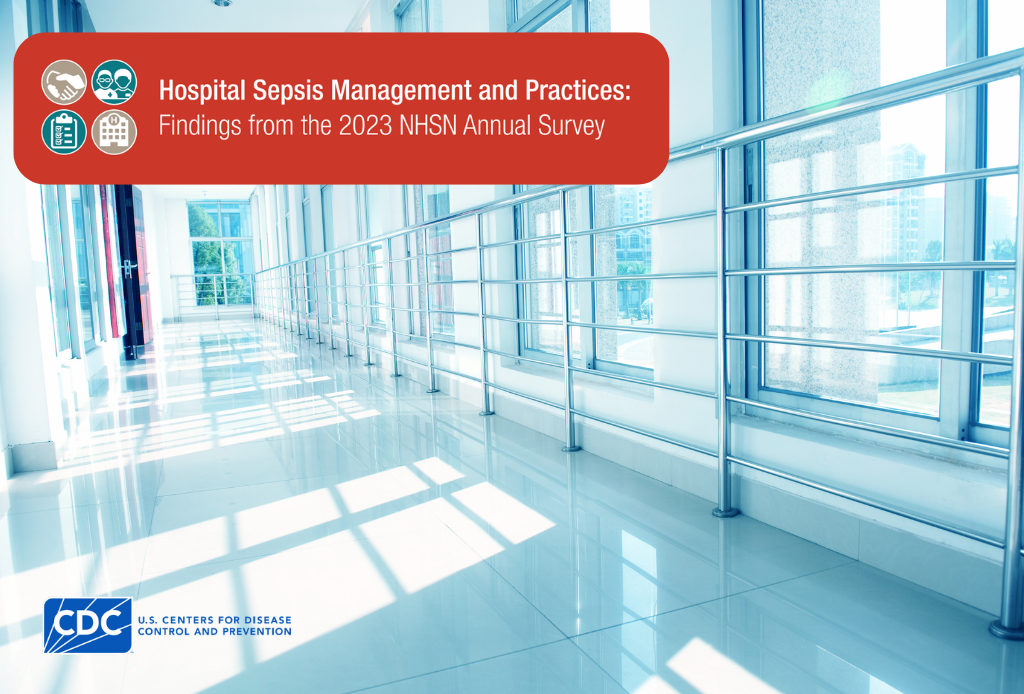
A Summary of the Findings From the CDC’s Strengthening Sepsis Management in U.S. Hospitals Report:
To address the challenges of sepsis management, the Centers for Disease Control and Prevention (CDC) released the Hospital Sepsis Program Core Elements on August 24, 2023. This guidance aims to refine sepsis programs in U.S. hospitals to enhance patient care and outcomes. This week the CDC issues a report to asses the adoption of CDC’s recommended practices. Here is a summary of the report and the report proper.
Current State of Sepsis Programs in U.S. Hospitals
A 2023 survey of 5,254 U.S. hospitals, including those in the National Healthcare Safety Network (NHSN) Patient Safety Component, assessed the adoption of CDC’s recommended practices. The survey shows modest progress but highlights areas for further improvement:
- Sepsis Committees and Leadership: 78% of hospitals have dedicated sepsis committees, indicating a growing focus on specialized sepsis oversight. However, only 59% reported adequate dedicated time for sepsis leadership, suggesting a need for greater resource commitment to ensure effective functioning of these committees.
- Data Analytics and Goal Tracking: 67% of hospitals have adequate data analytics resources for tracking sepsis outcomes. However, only 66% track progress towards sepsis goals, with larger hospitals (over 500 beds) more likely to do so (88%) compared to smaller hospitals (44%). This points to a need for improved data capabilities and goal-tracking in smaller hospitals.
- Usability of Sepsis Tools: Usability and clinician acceptance of sepsis tools are critical, yet only 45% of hospitals evaluate these aspects. Ensuring tools are user-friendly is vital for effective protocol implementation.
- Antimicrobial Administration: Prompt antimicrobial administration is crucial, but only 64% of hospitals have orders that default to immediate administration for suspected sepsis. More hospitals should prioritize rapid treatment initiation.
- Patient Recovery and Support: There are gaps in supporting patient recovery. Only 32% of hospitals have standardized verbal hand-offs, and 32% standardize screening for new functional or cognitive impairments. Furthermore, only 38% provide post-discharge contact information for clinical staff, indicating significant room for improvement in post-sepsis care.
- Education for Healthcare Staff: Education for certified nursing assistants (CNAs) and patient care technicians is limited. The survey found that only 22-23% of hospitals offer sepsis education during onboarding or annually. Enhancing training for all healthcare personnel involved in sepsis care is essential for consistent and effective treatment.
Opportunities for Improvement and Recommendations
Despite some progress, the survey identifies key areas for improvement:
- Increase Executive Sponsorship: Hospitals should seek strong executive support for sepsis programs. High-level commitment can drive necessary changes and ensure adequate resources for sepsis initiatives.
- Enhance Usability of Sepsis Tools: Evaluating and improving the usability of sepsis tools will help ensure they are practical and effective. Involving frontline staff in the design process can improve adherence and outcomes.
- Strengthen Recovery Processes: Standardizing processes for verbal hand-offs, screening for impairments, and providing clear post-discharge contact information will enhance patient recovery and reduce readmissions.
- Improve Staff Education: Expanding sepsis education to include CNAs and patient care technicians and making it a regular training component will better equip all staff members to manage sepsis effectively.
- Promote Prompt Antimicrobial Administration: Ensuring that antimicrobial orders default to immediate administration for suspected sepsis cases will help reduce delays in critical treatment and improve outcomes.
- Expand Data Access: Investing in data analytics resources, especially in smaller hospitals, will enable better tracking and analysis of sepsis outcomes, leading to more effective goal setting and monitoring.
Conclusion
The 2023 survey offers a snapshot of the current state of sepsis programs in U.S. hospitals, showing some improvement but also revealing significant areas for enhancement. By addressing these gaps and implementing the recommended changes, hospitals can strengthen their sepsis programs, leading to better patient care, reduced mortality, and improved long-term outcomes. The CDC’s Hospital Sepsis Program Core Elements are a crucial guide in this endeavor, and with ongoing commitment, hospitals can make substantial progress in combating sepsis.

